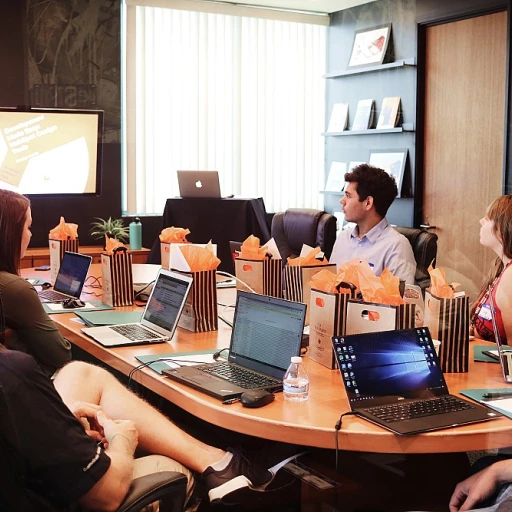
The Basics of Global Mobility Compensation
Foundations of Mobility Compensation
The realm of global mobility compensation is multifaceted, playing a vital role in how companies navigate the complex landscape of international assignments. At its core, these compensation packages are designed to attract and retain top talent by offering a combination of salary, benefits, and support that align with the challenges of working abroad. Global mobility programs aim to create a balance between the employee's personal and professional needs while minimizing the additional costs incurred by the company. A key component of these packages is the base salary, which is often adjusted to fit the living conditions and economic factors of the host country. Companies take into account the cost of living, housing, and school allowances to ensure that the employee maintains a comparable standard of living. In addition to adjusting pay, businesses often incorporate tax equalization policies. This ensures that employees on international assignments do not face heavier tax burdens due to differing tax laws in the host country. Such measures not only ensure fairness but also enhance the overall appeal of the mobility compensation. Beyond immediate finances, organizations also consider non-monetary benefits. Support with relocation logistics, such as flight arrangements and temporary housing upon arrival, is common. Moreover, companies sometimes offer cultural acclimatization programs and language training to help the employee and their family settle into their new home smoothly. In envisioning successful mobility programs, total rewards become a pivotal factor. Ensuring that employees feel valued and supported extends beyond simple financial compensation and requires a holistic approach. This includes thorough attention to the work-life balance, acknowledgement of unique living circumstances, and facilitation of a seamless transition during international assignments. For more insights on crafting effective mobility packages, the essence of a new hire can be examined here. The comprehensive strategies learned can lay the groundwork for future trends in global compensation, making it a crucial part of global talent acquisition and retention strategies.Factors Influencing Global Mobility Compensation
Evaluating Key Influencers in Global Mobility Compensation
When it comes to global mobility compensation, various factors significantly influence how compensation packages are structured. These elements can make or break the attractiveness of international opportunities for prospective employees. Understanding these influencers is crucial for companies aiming to design competitive and appealing mobility programs.
Firstly, the cost of living in the host country is a primary consideration. It directly affects the amount of compensation needed to maintain an employee's standard of living. High costs of living in certain countries necessitate increased remuneration to ensure that relocated employees can afford similar living standards as in their home country.
Tax implications are another significant factor. Different countries have distinct tax laws, and these can impact an employee's net pay. Practices such as tax equalization are often employed to mitigate discrepancies in tax liabilities when employees are on international assignments.
An employee's base salary often serves as the foundation of global mobility packages. However, additional benefits are typically required to attract top talent. These can include relocation assistance, housing allowances, and other incentives that can offset potential inconveniences of working abroad.
Furthermore, the length of the assignment also shapes compensation. Short-term assignments may have different benefits compared to long-term relocations. Companies must carefully assess the duration to align the compensation package appropriately.
Finally, company policy and objectives play a pivotal role. Each company has unique strategic goals which affect how they set their mobility compensation parameters. For instance, a company focusing on global expansion may offer more robust packages to ensure they attract the necessary talent.
For a deeper understanding of these complexities, you can explore insights on how companies navigate these challenges through resources on managing diverse employee needs.
Challenges in Designing Competitive Packages
Designing Competitive Global Mobility Packages: Challenges Unveiled
Crafting competitive global mobility compensation packages is no small feat. Companies face numerous challenges in creating packages that not only attract top talent but also ensure the financial viability of international assignments. The complexity of these packages often lies in balancing various elements such as base salary, benefits, and tax considerations.
One of the primary hurdles is cost management. The cost of living in the host country can significantly impact the overall compensation package. Companies must account for differences in living expenses, ensuring that employees maintain a similar standard of living during their assignments. This often involves adjustments to the base salary or additional allowances.
Tax equalization is another critical factor. International assignments can lead to complex tax situations, with employees potentially being liable for taxes in both their home and host countries. Companies must navigate these complexities to ensure compliance while also protecting employees from undue financial burdens.
Moreover, the rise of remote work and international talent pools has introduced new dynamics. Companies must now consider how to structure packages for employees who may not relocate but still require compensation adjustments due to differing cost-of-living standards.
Lastly, designing packages that align with a company's total rewards strategy is essential. This involves integrating global mobility compensation into the broader framework of employee benefits and rewards, ensuring consistency and fairness across the organization.
For more insights on overcoming these challenges, consider exploring top HR podcasts that delve into the intricacies of global mobility programs and compensation strategies.
Impact on Candidate Experience
Enhancing the Candidate Journey through Thoughtful Compensation
The way companies structure their global mobility compensation packages can significantly impact the candidate experience. When employees are considering international assignments, the clarity and comprehensiveness of the compensation package play a crucial role in their decision-making process. A well-designed compensation package should address several key areas to ensure a positive candidate experience:- Transparency: Candidates appreciate clear communication regarding their base salary, benefits, and any additional allowances. Companies should aim to provide detailed information about what the compensation package entails, including relocation and tax considerations.
- Customization: Not all employees have the same needs. Offering flexibility in the compensation package can help address individual circumstances, such as family needs or specific cost of living adjustments in the host country.
- Support Services: Providing robust support services, such as relocation assistance and tax equalization, can ease the transition for employees moving to a new country. This not only helps the employee but also reflects positively on the company's commitment to its talent.
- Long-term Considerations: For assignments that extend over a long term, companies should consider how the compensation package evolves. Regular reviews and adjustments can help maintain the employee's satisfaction and engagement.
Case Studies: Successful Global Mobility Programs
Insights from Successful Global Mobility Initiatives
Designing effective global mobility programs that align with a company’s strategic objectives and enhance the candidate experience is challenging. However, some organizations have excelled in this area by offering exceptional compensation packages and support systems. One company prioritizes a comprehensive approach to mobility compensation, ensuring that every aspect of an employee's relocation is covered. This includes addressing cost of living differences, maintaining pay equity between home and host countries, and providing comprehensive benefits and tax equalization policies. Their holistic balance sheet approach ensures that talent feels financially secure while on international assignments. In another instance, a forward-thinking company has embraced remote work as part of their global mobility strategy. This has allowed them to offer flexible work arrangements and tailor compensation packages that take into consideration the employee's home and host locations. By aligning global goals with individual needs, they have maintained high levels of employee satisfaction and retention. Moreover, mobility programs that incorporate thorough pre-assignment preparation and post-assignment integration have shown to significantly improve candidate experiences. By investing in cultural training and logistical support, companies enable employees to successfully transition into their host country roles, ultimately enhancing their productivity and job satisfaction. These examples underscore that successful global mobility programs require a thoughtful approach to compensation and benefits. When companies get these elements right, they not only attract top talent but also cultivate a positive and rewarding experience for their mobile workforce.Future Trends in Global Mobility Compensation
Emerging Trends in Global Mobility Compensation
Staying ahead in the realm of global mobility compensation packages involves keeping an eye on evolving trends that can significantly impact both the company and the employees. As international assignments become commonplace, companies need to innovate to attract and retain top talent while offering competitive packages. Here are some notable trends shaping the future:- Remote Work Mobility: With the rise of remote work, companies are adapting mobility programs to support talent working from different locations globally. This shift focuses on optimizing global talent management without the constraints of traditional relocation, allowing flexibility while managing tax implications and cost of living adjustments.
- Tax Equalization Enhancements: To ensure fair compensation, firms are getting more sophisticated with tax equalization policies. These policies aim to neutralize differences in tax obligations between the home and host country, ensuring employees receive consistent support and protection against adverse tax effects.
- Cost of Living Adjustments: Accurate cost of living assessments are crucial for fair compensation packages. As economic landscapes fluctuate, companies need to frequently update their balance sheets to reflect changes in pay scales and total rewards, enhancing the candidate experience and minimizing financial stress.
- Incorporating Culture and Wellbeing: Successful global mobility goes beyond financial compensation. Current trends emphasize integrating cultural adaptation support and employee wellbeing initiatives to ensure smooth transitions and satisfaction on international assignments.
- Focus on Long-Term Assignments: While short-term relocations remain significant, there's an increasing bias towards fostering long-term assignments. This approach not only aligns with the strategic goals of the organization but also allows for deeper integration of employees into the host country's culture and work environment.













